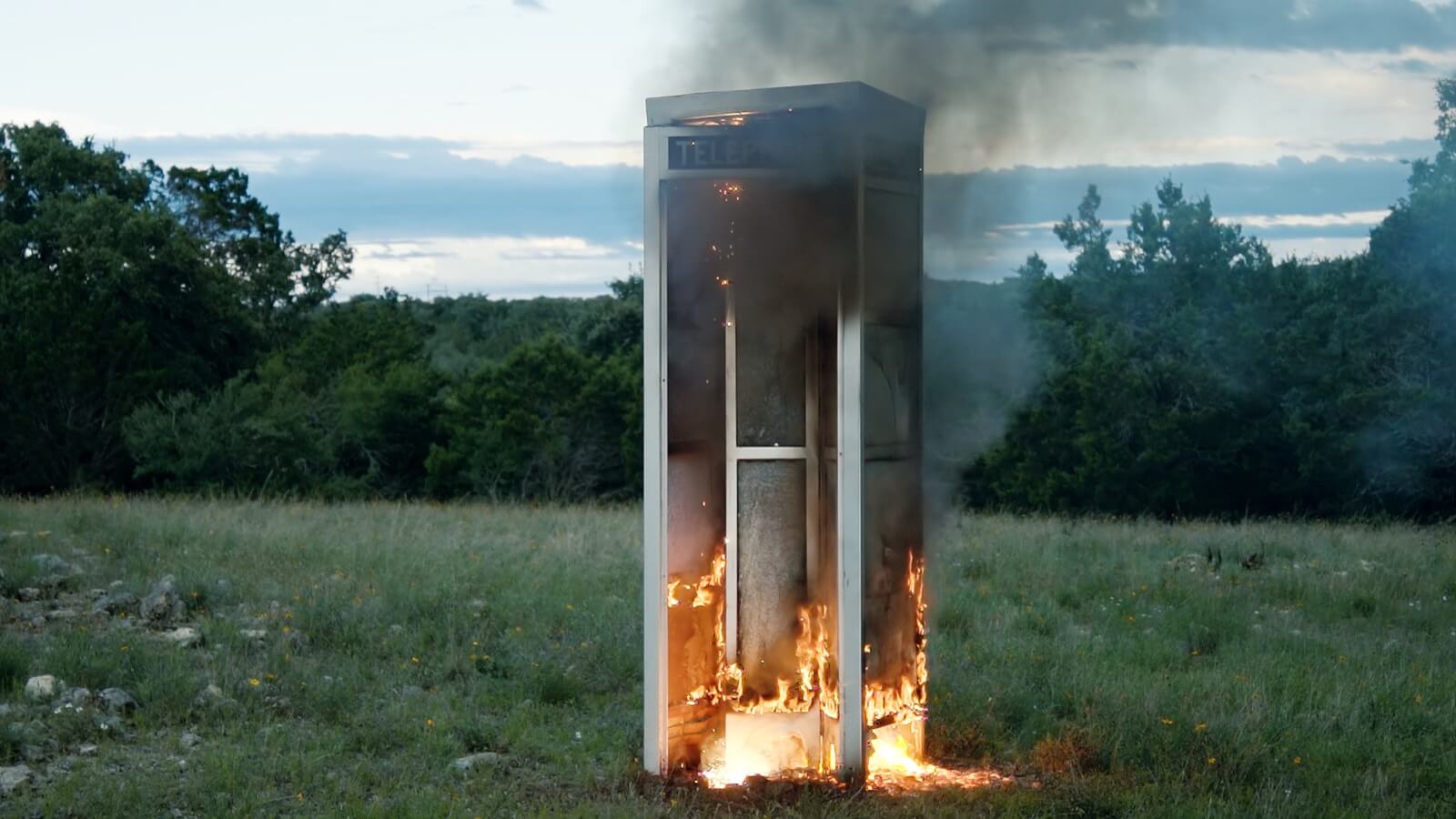Frank Heath: Blue Room | Art in America
Jun 01 2017

By Wendy Vogel
Laced with deadpan humor, Frank Heath’s sculptures and videos convey an obsession with archiving banalities. His 2014 exhibition “Backup,” at Simone Subal Gallery in New York, included the copper plaque diptych Live-Help Backup Plaque (Pioneer TX9100 Schematic JPEG), 2014. One panel is etched with alphanumeric code that will generate a digital image of a vintage stereo; the other side documents a meandering online chat about the stereo between the artist and a customer-service representative. In the first installment of Heath’s video series “On the Beach,” commissioned for the online magazine Triple Canopy and exhibited in “Backup,” actor Jesse Wakeman stars as a filmmaker who poses existential questions to subjects ranging from K-Mart shoppers to scientists. The second and latest episode, A Prime Condition (2017), contrasts the supposedly secure underground storage of film reels in a salt mine in Hutchinson, Kansas, with the obsolescence of DVDs.
“Blue Room,” Heath’s recent exhibition at Swiss In situ (the temporary Tribeca location of the Swiss Institute), features new works that merge the conspiratorial tone of “On the Beach” with old-fashioned phone pranksterism. In two video installations, unscripted audio conversations unfold between an unnamed character played by Wakeman and real customer-service providers. The exchanges quickly turn surreal. In War Pigeon (2017) Wakeman explains to a Chase Bank representative that he doused a Manhattan branch’s plate-glass window with a McDonald’s Shamrock Shake. He confesses to feeling paranoid because the branch happened to be in Tower 270, where a Manhattan Project team designed nuclear weapons. Furthermore, he suspects that a bird he noticed observing him during the incident might have been a messenger pigeon of the type used by the military in WWII to send coded missives. The pigeon, Wakeman says, subsequently followed him around the city.
The Hollow Coin (2016) borrows another espionage conceit. Wakeman dials a pay-phone helpline from a downtown Manhattan phone booth, located across the street from a windowless former AT&T call center. He tells the agent who answers that, just like a midcentury Russian spy, he enclosed important material inside a hollow nickel, which he accidentally used to pay for the call. He explains how his nickel contains a digital file with a mysterious video of a telephone booth blowing up in an open field. The call concludes with the representative describing how to get the nickel back, detailing a comically protracted bureaucratic process with a minimum forty-five-day waiting period.
Visually, the videos resemble slide lectures or Chris Marker’s La Jetée (1962). They both feature a series of close-up stills depicting objects described in the conversations, like a spilled milk shake, or depopulated views of the Manhattan architecture referenced in each story. A few bursts of moving imagery interrupt this plodding pace. A short montage of archival footage related to messenger pigeons interrupts the rhythm of War Pigeon, and The Hollow Coin crackles to life with a slow-motion sequence—apparently, the video contained inside the nickel—showing sparks erupting from a phone booth, as violent and dreamlike as the house fire concluding Antonioni’s Zabriskie Point (1970).
There are moments of tension in Heath’s work when the agents break with customer-service etiquette. The Chase Bank representative is mostly willing to go along for the ride. “That sounds trippy,” he says about the pigeon. The representative in The Hollow Coin, however, loses patience when he asks Wakeman to dictate his story for an official written complaint. Wakeman begins to dictate the meandering story, complete with requests to render certain phrases in italics. The representative snaps back that there are no typographical options. In response to the agent’s curtness, Wakeman concludes his narrative with a desperate bid for human contact. Perhaps acting as Heath’s avatar, he asks for feedback on his video of the phone-booth explosion hidden in the nickel: “Tell me, phone person, if the violence in this image is terrifying in a sad way, like a beheading, or is it terrifying in a threatening way?”
